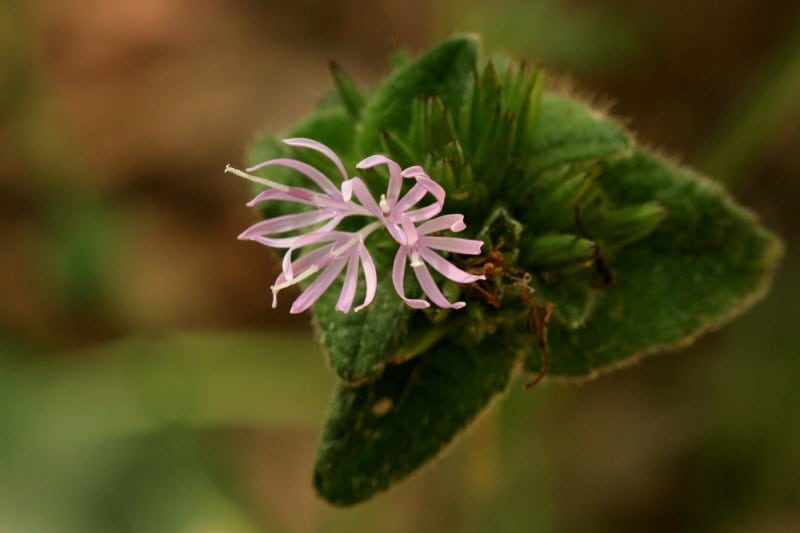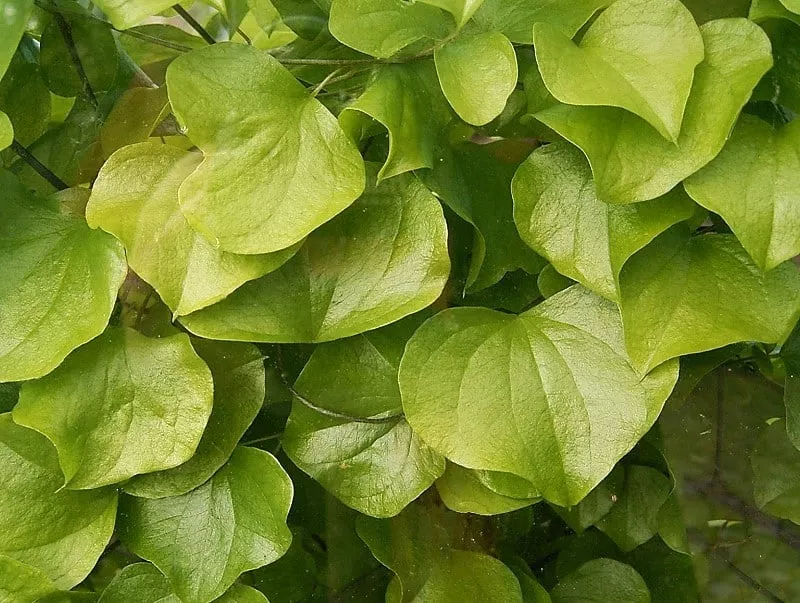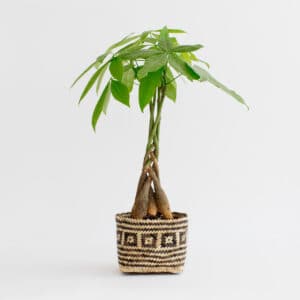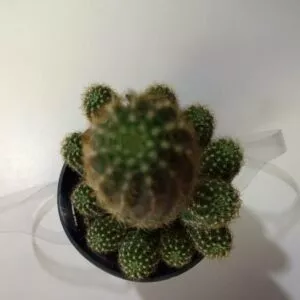No products in the cart.
Table of Contents
A perfect houseplant for beginners is the ponytail palm or elephant’s foot. A palm, okay, that doesn’t sound easy to care for. But, no, nothing is daunting about it. The truth is it is not a palm.
The Beaucarnea recurvata is not a palm and only resembles one. The subtropical tree has a central trunk with leathery green leaves that cascade from the top.
You find them popping up everywhere. They usually being treated as outdoor plants in tropical or warm climates. So we are sure with our help you will have no problem with growing ponytail palms.
What Are Ponytail Palms?
The Beaucarnea recurvata you may find commercially under the generic name Nolina. The tree comes from Mexico and is succulent that reaches up to 30-feet in height with a width of 3-feet.
But if you grow them indoors, it remains small, becoming root-bound. Another exciting thing is the plant is related to the Yucca tree and is neither a palm nor a bottle tree from Australia. One thing the plant is it is a tough, long-living, and easy-to-care for plant.
Ponytail Palm Care

Okay, now that you know the elephant’s foot plant is not a palm, how do you care for it if we say it is easy? Here is a short list of all the essential information you need before we get into all the details.

Recommended Potting Mix for Elephant’s Foot
A potting mix made for cacti or succulents is a service for the ponytail palm. The main thing, friends, is that the ground needs to be fast draining.
Like most succulents, the elephant’s foot is not a huge fan of wet soil. Hence, we recommend a mixture of potting soil, perlite, and sand for your indoor plant to thrive.
Another beneficial potting medium is to use a clay pot.
The Lighting Condition for Elephant’s Foot

Okay, the ponytail palm is a desert child, and love the sun with enough light. The fantastic thing is to place them in partial shade, bright indirect light, or full sun. But remember, while they can tolerate low light, the more sun they get, the better they grow.
Watering Your Ponytail Palm
Yes, this desert child is not fond of wet soil and prefers dry soil year-round. But this does not mean that your palm tree does not get thirsty. The rule of thumb is to saturate your faux palm to provide the roots with enough water.
Then leave your plant to dry out between watering. So, resist the urge to water your elephant’s foot all the time. You can expect to water your tree every three to four weeks. The problem is that overwatering can lead to many concerns discussed later on.
Ideal Temperature & Humidity
The elephant’s foot is not picky and thrives in average indoor temperatures. So the best place is a room with 64° – 73°F (18-23°C). But anything below 44°F (7°C) causes damage to the ponytail palm leaves. Still, the plant also goes through a dormancy period in winter.

So, the best is to provide your desert child with a cooler spot during winter. Now, you might think your tree needs no humidity. Wrong! The faux palm is very tolerant to low humidity making them great ornamental plants in the home.
The main concern is too much moisture, but dry air is this plant’s best friend.
Feeding Your Ponytail Palm
If you are lucky, you will experience something unusual if your ponytail palm blooms. The flower is rare and emerges at the top as pale greenish-yellow branchlike brackets. The buds eventually turn white.
So, if you ever want to experience the blooms, you need to feed your ponytail palm. The important thing is to use half a strength of feed, such as a cactus fertilizer. You can do this once or twice a month during your tree’s growing season.
Propagating Your Elephant’s Foot
The fun thing is that you can create new plants from the ponytail palm without much fuss. Your faux palm produces offsets, also known as pups. Here is an excellent way for you to propagate your plant:
Pup Division
- Take your parent plant with shoots and dig it up to help expose the new offsets.
- Take a clean knife and separate the pups from the mother plant, making incisions. We recommend looking for offsets measuring about four inches as they root faster.
- Prepare a pot with a drainage hole and fill it up with succulent-based or cactus soil.
- Water the pups and place a bag over the top.
- Keep the pot covered in a warm room and continue misting the pups along the surface of the ground as you notice roots appearing.
- Once the roots appear, you can transfer them to a larger potting medium.
USDA Growth Zone
Your elephant’s foot thrives in the USDA hardiness zones 10a to 11. They perform well in these regions as indoor plants.

Potting and Pruning Ponytail Palms
Okay, here it all depends on how big you want your fake palm to grow. Still, repotting the ponytail palm is not difficult as the elephant’s foot does not lose its leaves when you transplant them to a new container.
If you want a bigger elephant’s foot, it helps to place it in a larger pot. An ideal time to repot your tree is from February to March. We also recommend a flat container as the plant has a fibrous root system.
You can also trim back your palm at any time. Besides, you can also prune the stem to any height to help stimulate the formation of the trunk.
Elephant’s Foot Varieties and Similar Plants
Now, the fascinating thing is different plant species have the same name as the ponytail palm known as elephant’s foot. Here are some of them to prevent confusion.
Elephantopus tomentosus

Other common names are elephant’s foot and grandmother’s devil. It is a wildflower belonging to the daisy family found in Texas and southern parts of the USA.
Dioscorea elephantipes

Another elephant’s foot plant, also known as the Hottentot bread, you find growing in South Africa. The flowering plant has a base that looks like the foot of an elephant. It is a vining plant and grows slowly. Many people also refer to its a tortoiseshell as the resemblance is the same.
Yucca Plant

It is a visually exciting palm tree that grows slowly, and best of all, it is drought tolerant. While it does not have the name elephant’s foot, the ponytail palm belongs to Agavaceae.
Pesty Invaders and Concerns
Okay, many plants are sensitive to pests. Yeah, the ponytail palm is not one of them. Yes, you may find some insects attacking the foliage, but it is not that big a concern. Common pests are scale, mealy bugs, and spider mites.
Another problem is root rot, a disease that leaves your plant with stunted growth. Make sure not to overwater them for they can be forgiving in terms of watering or you can say they are drought tolerant. The majority of bugs you will notice on the leaves and appear as black or white spots. To remove them, you can use a hose to wash them away.
If the infestation persists, then we recommend using an insecticide. But we do recommend looking out for these problems with your faux palm:
In stock In stock In stock In stock
$6.00
Sold By:
Smoot's Farm
Succulent Succulent Haworthia Herbacea 2″ Pot Live Plant
Only 5 available and it’s in 1 people’s basket Rated 4.89 out of 5 based on 27 customer ratings00
Sold By:
Smoot's Farm
$44.00
Sold By:
NEEPA HUT
6″ Braided Money Tree Plant + Planter Basket
Only 10 available and it’s in 3 people’s basket Rated 4.99 out of 5 based on 221 customer ratings06
Sold By:
NEEPA HUT
$11.99
Sold By:
Succulent Oasis
Cactus Plant Medium Chamaelobivia “Rose Quartz”
Rated 4.84 out of 5 based on 352 customer ratings02
Sold By:
Succulent Oasis
$12.99
Sold By:
BubbleBlooms
Pilea peperomioides / Chinese money plant / Chinese missionary plant
Only 993 available and it’s in 4 people’s basket Rated 4.81 out of 5 based on 279 customer ratings04
Sold By:
BubbleBlooms
Brown Tipped Leaves
Well, there can be a diversity of reasons why this happens. A typical one tends to be of underwatering or too much fertilizer. We recommend tackling the problem by stopping the feeding first.
If you do not notice any difference after a week, then increase your plant’s moisture intake through misting or a bit more water.
Leaves Turn Yellow
Yes, your plant has green leaves, and when they suddenly start to yellow, then you might be overwatering your plant. Leave your ponytail palm to dry out before watering them again.
Shriveling Trunk
The elephant’s foot trunk holds the water back, and wilting is a sign that it is not getting enough moisture. You can increase the water until the trunk repairs itself.
Leaf Loss
At some point, your rosette of foliage on the tree will wilt and fall off. When this happens, it can be from overwatering. To rectify the problem, decreases the amount of water and wait for the soil to dry out.
Frequently Asked Questions
The best is to transplant your elephant’s foot into a larger pot to encourage growth. Doing this allows the roots to spread and provides them with more oxygen, nutrients, and moisture.
There are two reasons why the leaves could be turning brown. The first is over-fertilizing, and the second one is underwatering. Hence, we recommend stopping feeding your plant first, and if the problem persists, provide it with more water.
Yes, as the coffee grounds provide potassium and phosphorus with nitrogen for your ponytail palm and prevent overfertilization.
There is no need to plant hunt online or visit your local garden center for the elephant’s foot plant. The fantastic thing is you can find the ponytail palm right here at Plantly. So sit back and check this tremendous plant out that is neither a palm nor a tree.
Whether you want to buy, sell or simply reach out to other plant enthusiasts, Plantly is the right place to be!
-
$6.00Sold By: Smoot's Farm
In stock
Succulent Succulent Haworthia Herbacea 2″ Pot Live Plant
Only 5 available and it’s in 1 people’s basketRated 4.89 out of 5 based on 27 customer ratings00Sold By: Smoot's Farm -
$44.00Sold By: NEEPA HUT
In stock
6″ Braided Money Tree Plant + Planter Basket
Only 10 available and it’s in 3 people’s basketRated 4.99 out of 5 based on 221 customer ratings06Sold By: NEEPA HUT -
$11.99Sold By: Succulent Oasis
In stock
Cactus Plant Medium Chamaelobivia “Rose Quartz”
Rated 4.84 out of 5 based on 352 customer ratings02Sold By: Succulent Oasis -
$12.99Sold By: BubbleBlooms
In stock
Pilea peperomioides / Chinese money plant / Chinese missionary plant
Only 993 available and it’s in 4 people’s basketRated 4.81 out of 5 based on 279 customer ratings04Sold By: BubbleBlooms






